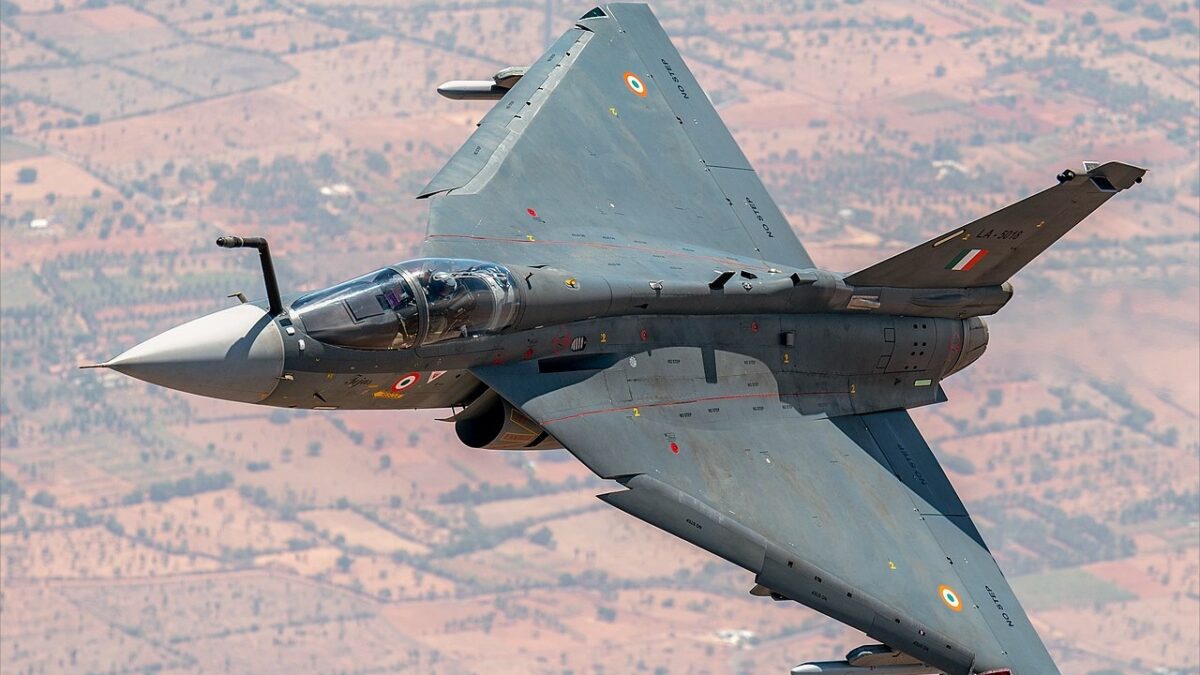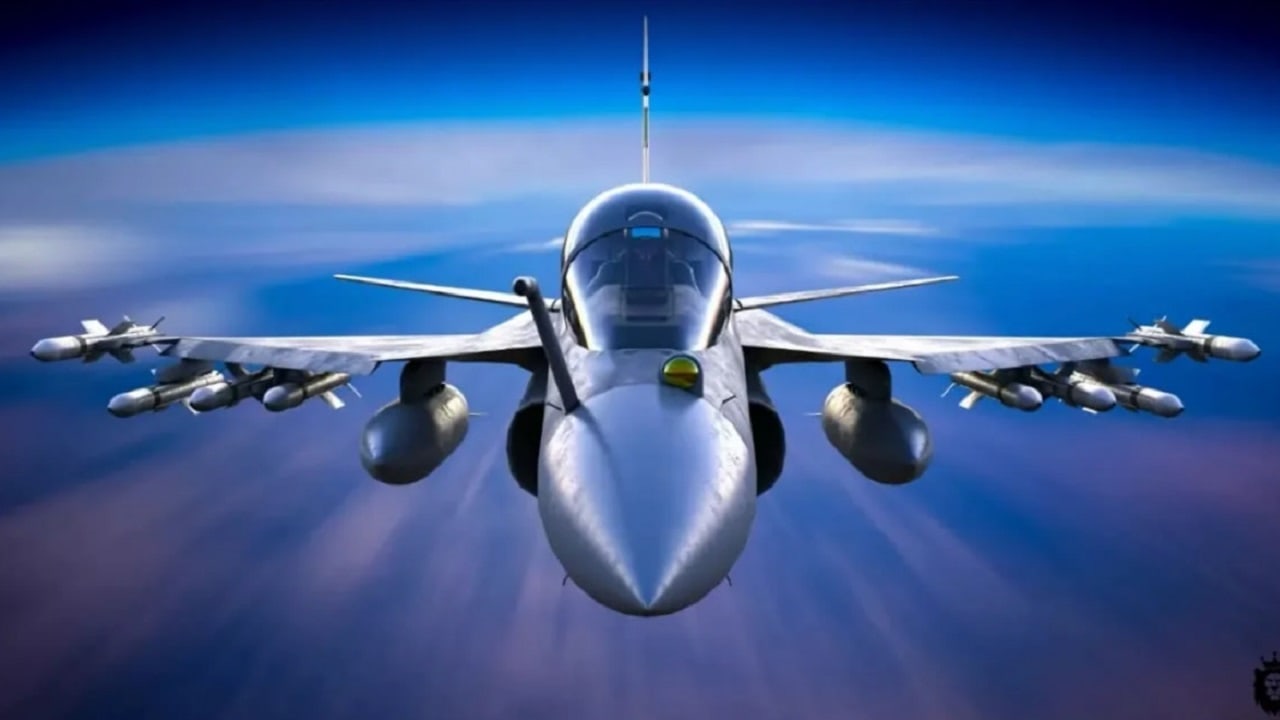When looking at the developmental history of India’s homegrown HAL Tejas fighter plane, you could see a glass half-empty or one half-full.
From the glass-half-empty perspective, you would note it is somewhat embarrassing that 14 years elapsed between the warbird’s maiden flight and its attainment of full operational status. From the glass-half-full standpoint, at least the Tejas did go into production, and it went operational – quite unlike another lightweight compact fighter design, the Russian Sukhoi Su-54, which never got off the ground.
“Open the Pod Bay Doors Please, HAL”
Sorry to disappoint the sci-fi fans among 19FortyFive’s loyal readers, but HAL in this context has nothing to do with the AI character from Stanley Kubrick’s classic film 2001: A Space Odyssey, nor to the Arthur C. Clarke novel upon which the screenplay was based.
HAL is in this context the acronym for Hindustan Aeronautics Limited, an Indian state-owned aerospace and defense company headquartered in Bengaluru. It was founded in December 1940, began producing aircraft in 1942 – five years before the country attained independence – and is one of the oldest and largest aerospace and defense manufacturers in the world.
HAL designed the Tejas in order to fulfill the Indian government’s objectives for a Light Combat Aircraft (LCA) program. In a general sense, India sought to become more self-reliant by reducing the country’s dependence on foreign imports for its aerial arsenal. More specifically, it wanted to replace the Indian Air Force’s aging fleet of Vietnam War era-vintage MiG-21 “Fishbed” fighters.
The LCA project was established in 1983, followed by the project definition phase in 1986. From there, the aforementioned maiden flight didn’t take place until Jan. 4, 2001, and official operational status was finally established on Jan. 17, 2015.
In other words, a whopping 32 years passed from the metaphorical planting of the LCA seeds to the bearing of their fruit.
Patience Is a Virtue
But hey, good things come to those who wait, right? For one thing, the test pilot for that maiden flight, now-retired Indian Air Force Wing Commander Rajiv Kothiyal, was honored with the prestigious Iven Kincheloe Award by the Society of Experimental Pilots in the U.S.
More significantly, the end product has turned out to be the world’s smallest and lightest supersonic combat aircraft. It is 43.3 feet in length and 14.4 feet in height, with a wingspan of 26.9 feet and a maximum takeoff weight of 13.5 tons. Regarding the supersonic aspect, this little bantamweight 4.5-generation fighter zips through the air at a top airspeed of Mach-1.6, or 1,227 miles per hour.
“Lightweight” does not mean lightly armed, however. The Tejas packs a very respectable punch, in the form of a 23mm Gryazev-Shipunov GSh-23 twin-barrel cannon. It has eight hardpoints with a capacity of 5,300 kilograms’-worth of bombs or missiles such as the Russian R-73 “AA-11 Archer” or the Israeli Python-5. HAL’s official website gives some additional details on the aircraft’s capabilities:
“It has quadruplex digital fly-by-wire Flight Control System (FCS) with associated advanced flight control laws. The aircraft with delta wing is designed for ‘air combat’ and ‘offensive air support’ with ‘reconnaissance’ and ‘anti-ship’ as its secondary roles. Extensive use of advanced composites in the airframe gives a high strength to weight ratio, long fatigue life and low radar signatures. Aeronautical Development Agency [ADA] is the designated project manager for the development of LCA.”
Future Potential
As of July 2022, only 31 of the warbirds have been built. But if the Tejas draws the interest of export customers, production may ramp up sooner rather than later. Currently, the Tejas is one of the final two contenders for the Royal Malaysian Air Force’s Fighter Lead In Trainer-Light Combat Aircraft program, although the most recent rumblings indicate that South Korea’s FA-50 is the odds-on favorite to win the bid.
But even if that prospect falls through for India, they’ve got another potential prospect waiting in the wings. According to reporter Huma Siddiqui of the Indian Financial Express:
“Sources have confirmed to Financial Express Online: ‘Argentina will be looking to export from India two variants of the LCA Tejas. First would be its two-seater operational conversion trainer aircraft, akin to what might be with the Indian Air Force (IAF). The second would be the export variant, the LCA Tejas Mark 1A.’ During meetings in Buenos Aires, the executives from HAL met with the Argentinean Chief of Naval Staff, Admiral Julio Guardia, on August 31, 2022. Francisco Cafiero, Argentinean Secretary of International Affairs and Daniela Castro, Secretary of Defence Production, Ministry of Defence, also held talks with the HAL delegation the same day. On September 1, HAL met with General Guillermo Pereda, Chief of General Staff, Argentine Armed Forces. A meeting followed this up with Brigadier Xavier Julian Issac, the Chief of General Staff, Argentine Air Force.”

HAL Tejas (LA-5018) of Squadron 18 Flying Bullets doing air maneuver.
Time will tell. HAL executives will undoubtedly be on pins and needles in the meantime.
Christian D. Orr is a former Air Force Security Forces officer, Federal law enforcement officer, and private military contractor (with assignments worked in Iraq, the United Arab Emirates, Kosovo, Japan, Germany, and the Pentagon). Chris holds a B.A. in International Relations from the University of Southern California (USC) and an M.A. in Intelligence Studies (concentration in Terrorism Studies) from American Military University (AMU). He has also been published in The Daily Torch and The Journal of Intelligence and Cyber Security. Last but not least, he is a Companion of the Order of the Naval Order of the United States (NOUS). In his spare time, he enjoys shooting, dining out, cigars, Irish and British pubs, travel, USC Trojans college football, and Washington DC professional sports.

